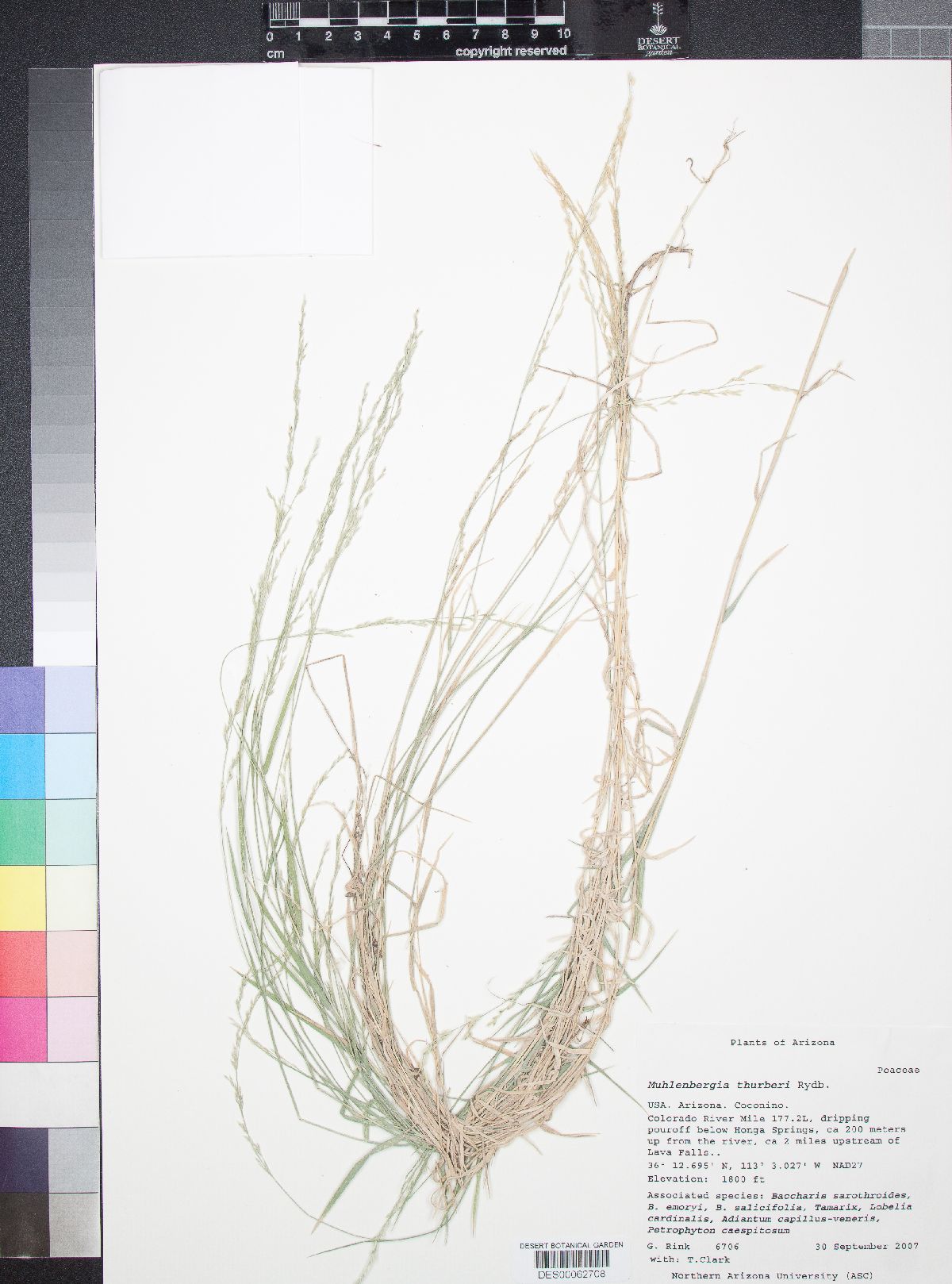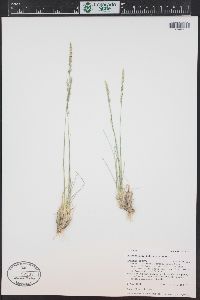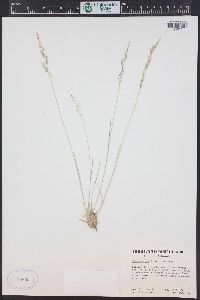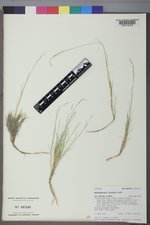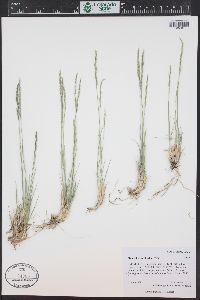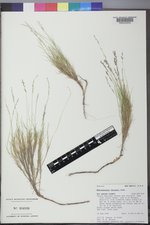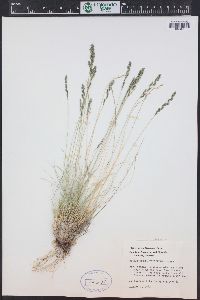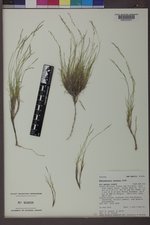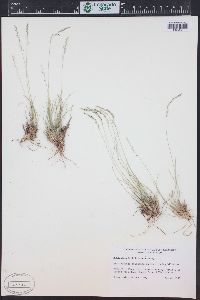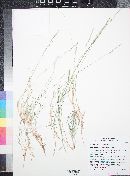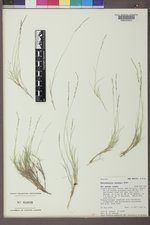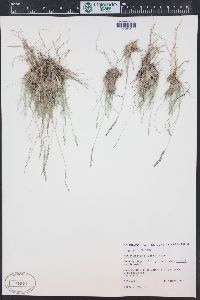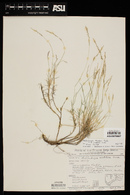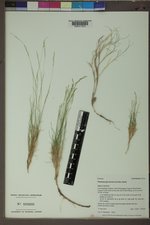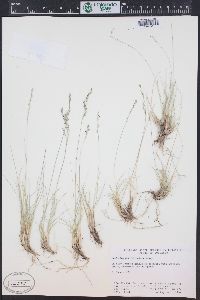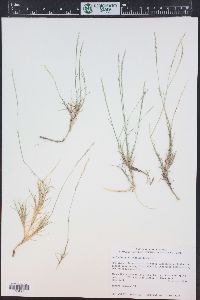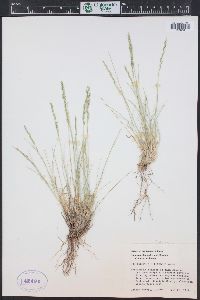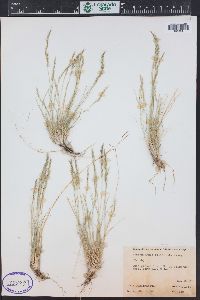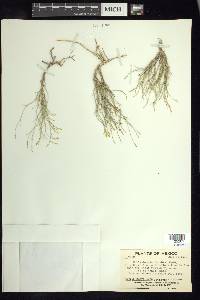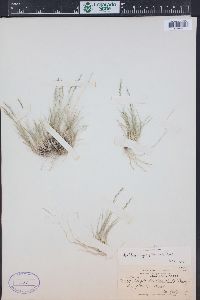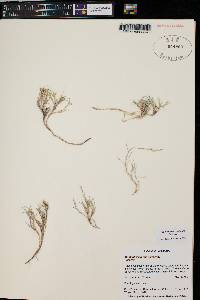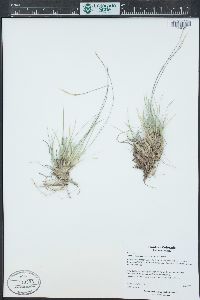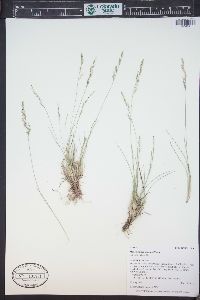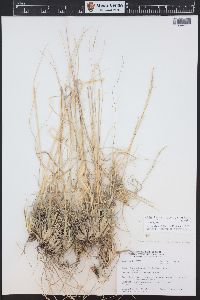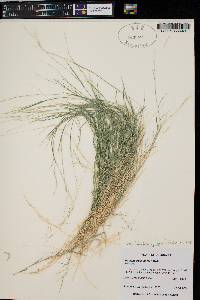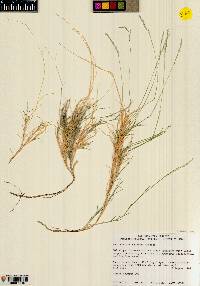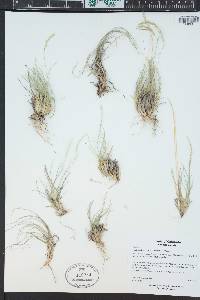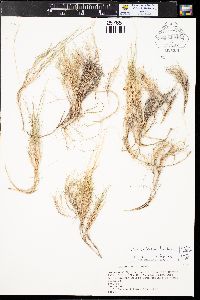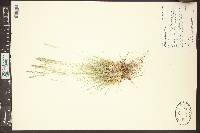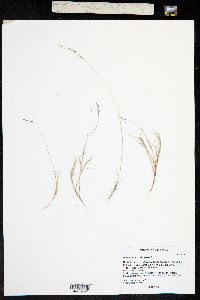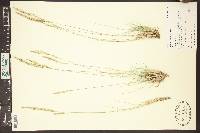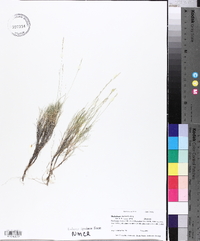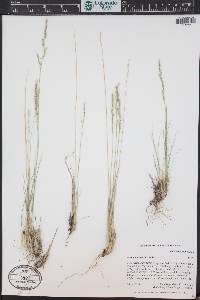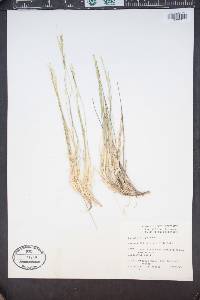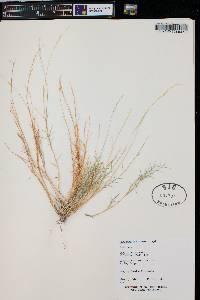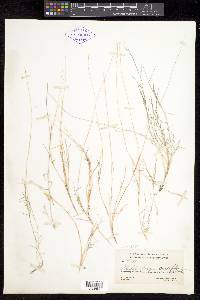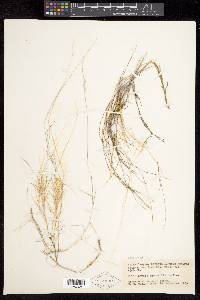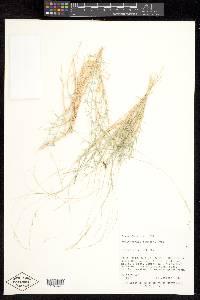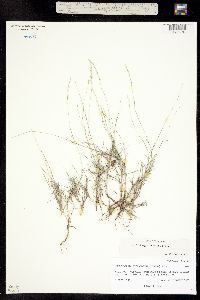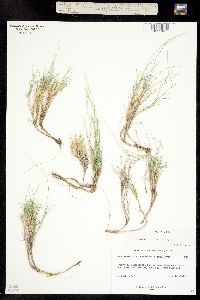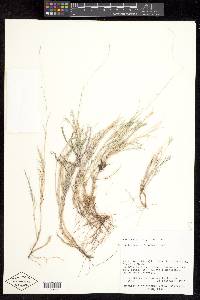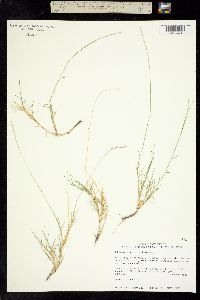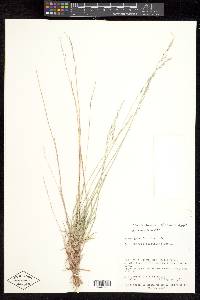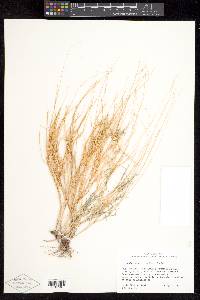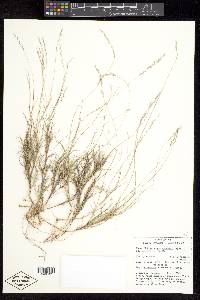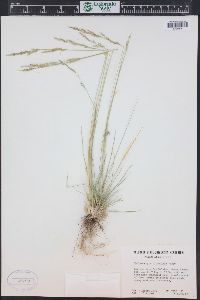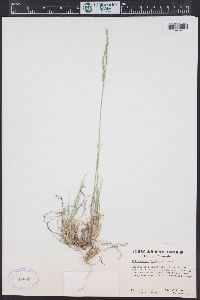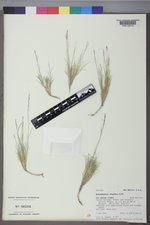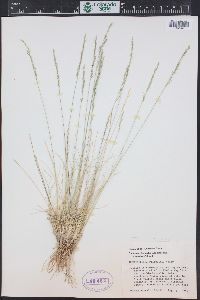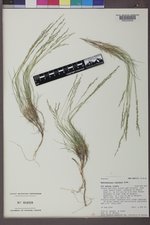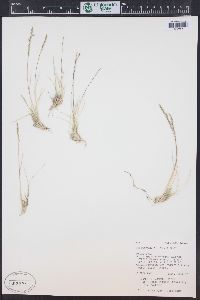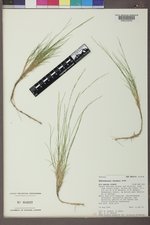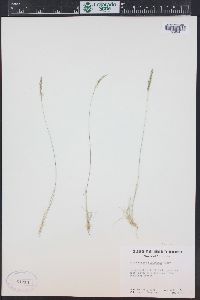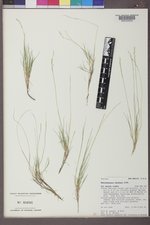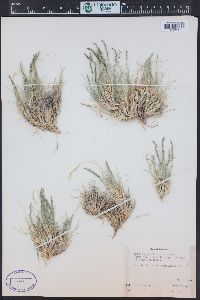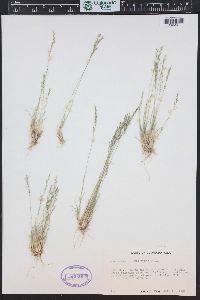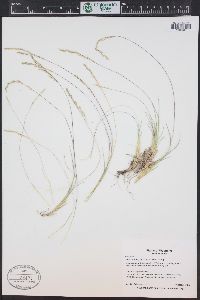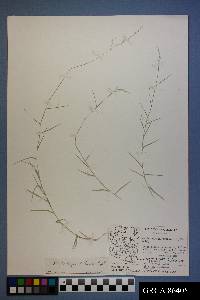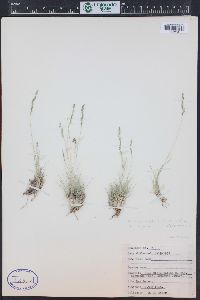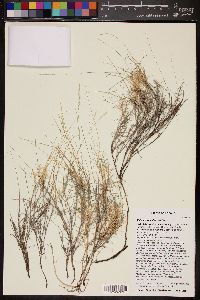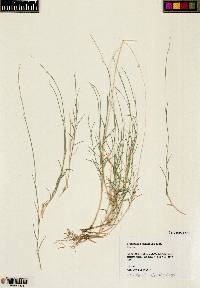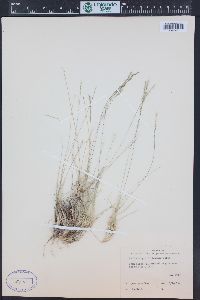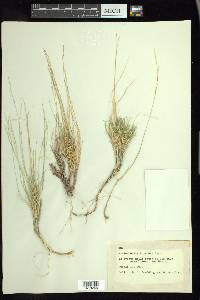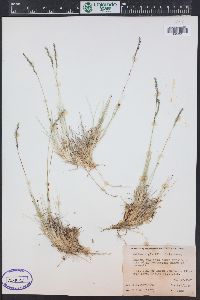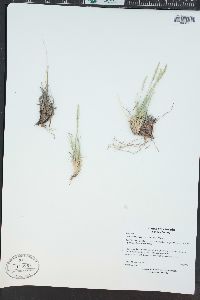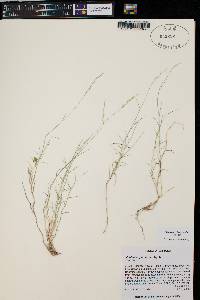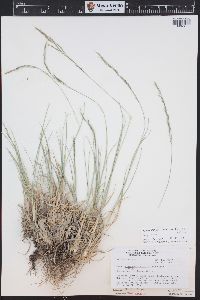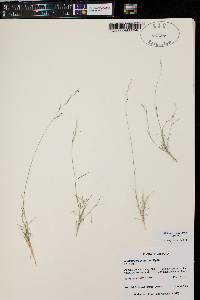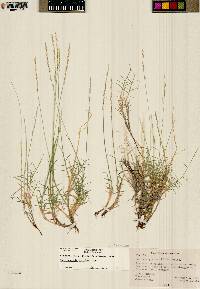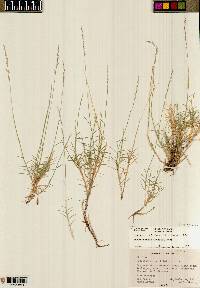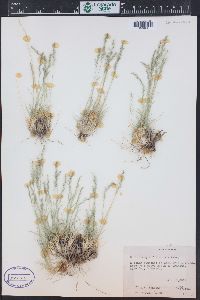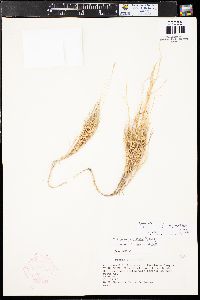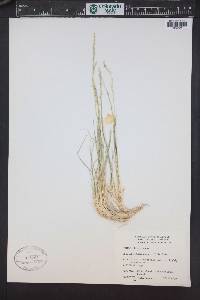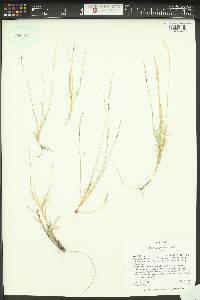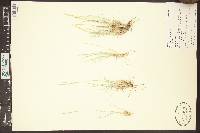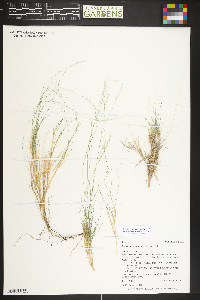Muhlenbergia thurberi
|
|
|
|
Family: Poaceae
Thurber's Muhly, more...Thurber muhly
[Sporobolus thurberi Scribn., moreVilfa filiculmis Thurb. ex Scribn.] |
Plants perennial; rhizomatous, not cespitose. Culms 12-36 cm tall, 0.3-0.5 mm thick, often clumped, usually erect, somewhat decumbent at the base; internodes mostly or completely glabrous, sometimes strigose below the nodes. Sheaths shorter than the internodes, hirtellous near the margins; ligules 0.9-1.2 mm, membranous, truncate to obtuse, erose; blades 0.2-3.7 cm long, 0.2-1 mm wide, tightly involute, straight to arcuate, smooth or scabridulous abaxially, hirtellous adaxially. Panicles 0.7-5.5 cm long, 0.2-0.7 cm wide, contracted, not dense, sometimes interrupted below; primary branches 0.4-1.8 cm, appressed; pedicels 0.1-4 mm. Spikelets 2.6-4 mm. Glumes subequal, 1.6-3 mm, 1-veined, scabridulous on the veins, acute, unawned; lemmas 2.6-4 mm, lanceolate, hairy on the lower 3/4, hairs to 1.2 mm, tawny, apices acuminate, unawned or awned, awns to 1 mm; paleas 2.6-4 mm, lanceolate, intercostal region tawny pubescent; anthers 2.1-2.3 mm, yellowish-purple. Caryopses 2-2.2 mm, fusiform, light brownish. 2n = unknown. Muhlenbergia thurberi usually grows in moist soil in seeps near canyon cliffs, sandstone slopes, and rocky ledges, at elevations of 1350-2300 m. The species appears to be restricted to the southwestern United States. It flowers from July to September. Muhlenbergia thurberi resembles M. curtifolia, differing in its tightly involute blades, and longer anthers and ligules. The two species have been found growing within 50 m of each other in Apache County, Arizona, but in different habitats: M. curtifolia growing in a damp drainage areas whereas M. thurberi grew near a moist but dryer canyon cliff. FNA 2007, Field Guide to Forest & Mtn. Plants of N AZ 2009, Ann. Checklist GCNP 1987 Common Name: Thurber's muhly Duration: Perennial Nativity: Native Lifeform: Graminoid General: Rhizomatous perennial, usually erect, partially decumbant at the plant's base, to 40 cm tall, with involute leaves and contracted panicles. Vegetative: Blades 2-37 mm long, to 1 mm wide, tightly involute, hirtellous above, smooth or scabridulous below; ligules 1 mm long, membranous, truncate; stems 12-36 cm tall, often clumped; internodes glabrous; sheaths shorter than internodes. Inflorescence: Panicles 7-55 mm long, 2-7 mm wide, not dense, can be interrupted below; primary branches 4-18 mm long, appressed; spikelets 2-4 mm long; glumes 1-3 mm long, subequal, 1-veinded, acute, unawned; lemmas 2-4 mm long, hairy on lower portion with hairs to 1 mm long, can be awned or unawned with awns to 1 mm long; paleas 2-4 mm long, lanceolate, pubescent; anthers 2 mm long, yellowish/purple. Ecology: Found in moist areas on sandstone slopes, rocky ledges, and in canyon seeps near cliffs from 4400-75000 ft. (1350-2300 m); flowers July-September. Distribution: Nevada, Arizona, New Mexico, Utah, Colorado Notes: Is similar to M. curtifolia, except curtifolia has leaf blades that are flatter, and its ligules and anthers are shorter. M. thurberi also resembles M. pungens, except M. pungens doesn't have pubescent lemmas and paleas. Ethnobotany: Unknown Etymology: Muhlenbergia is named for Gotthilf Heinrich Ernst Muhlenberg (1753-1815) a clergyman and botanist from Pennsylvania; thurberi is named for George Thurber (1821-1890). Editor: LKearsley, 2012 |

